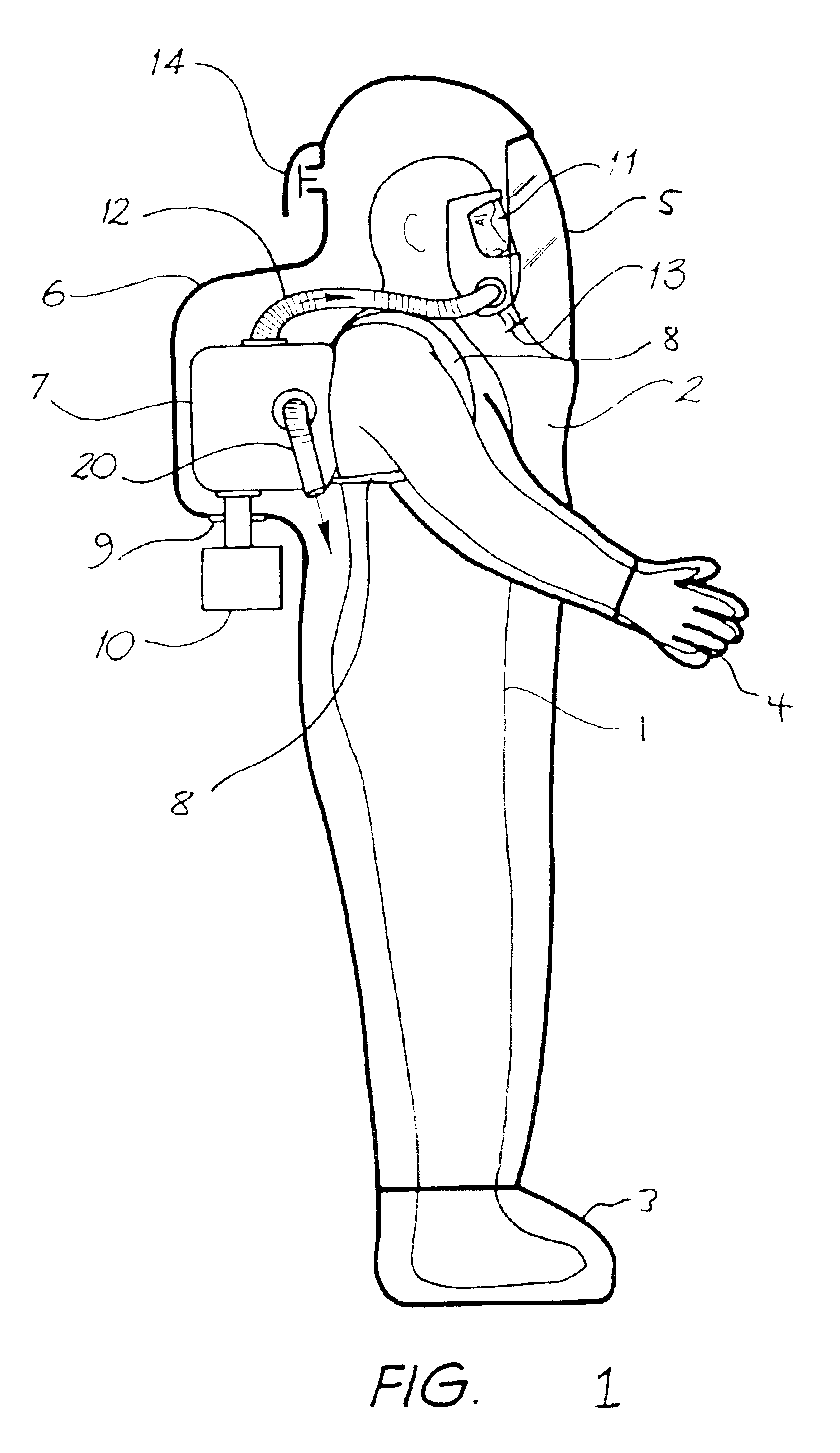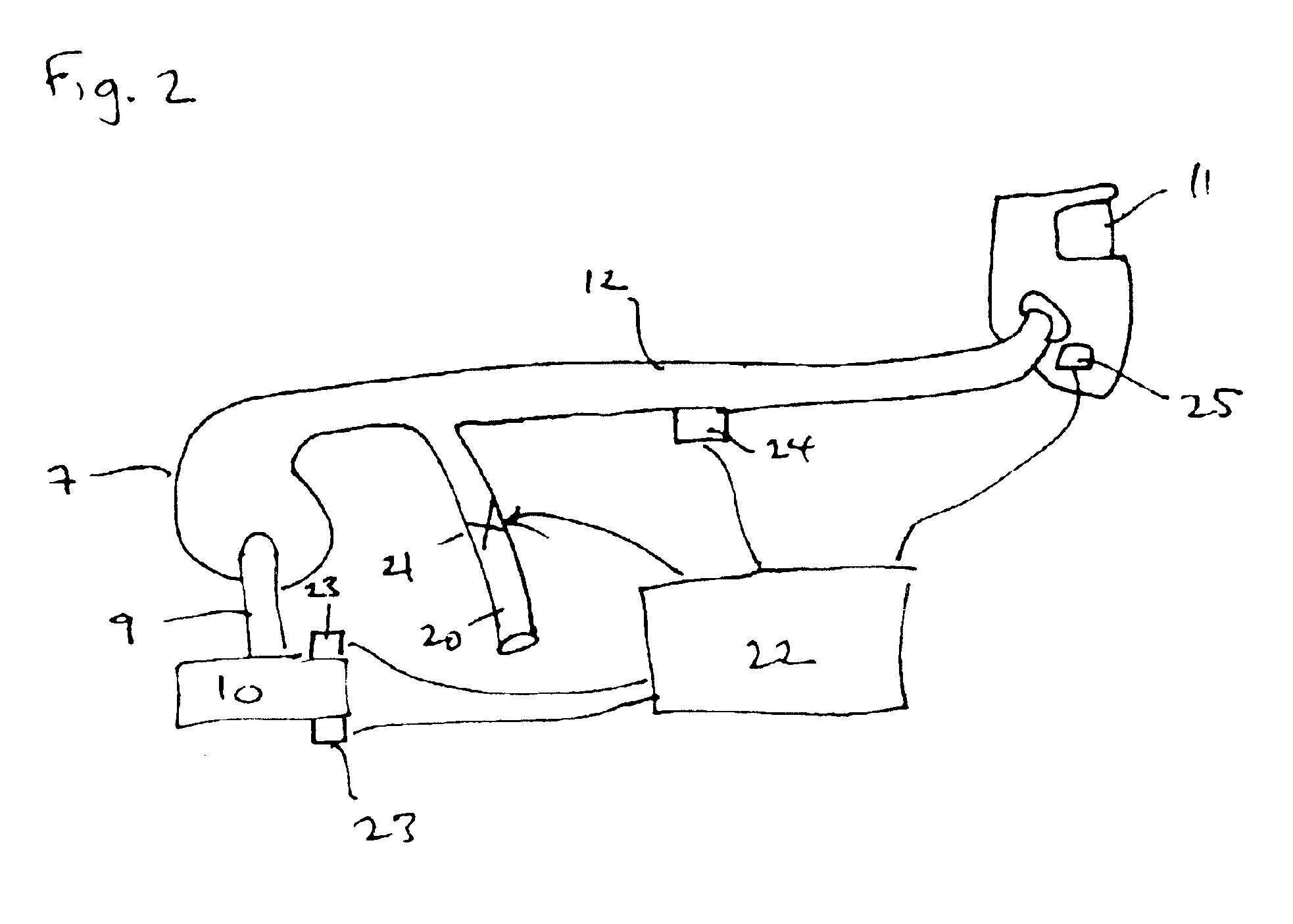Ventilation system for a protective suit
a ventilation system and protective suit technology, applied in the direction of respirators, life-saving devices, inhalators, etc., can solve the problems of general discomfort of workers using protective suits, temperature and humidity may rise rapidly, and the effect of reducing the number of people in the protective sui
- Summary
- Abstract
- Description
- Claims
- Application Information
AI Technical Summary
Benefits of technology
Problems solved by technology
Method used
Image
Examples
Embodiment Construction
Referring to FIG. 1, user 1 is wearing a gas-tight polyamide protective suit 2. Boots 3 are sealed to the suit around the ankles, and gloves 4 are sealed around the wrists to provide complete protection from the environment. A transparent panel of chemical resistant PVC 5 allows the user to view the environment. An extension 6 of the suit covers an APR unit 7.
Inside the suit 2, the user wears a harness 8 to mount the APR unit 7 on his back. A hole 9 in the back of the suit provides an air inlet port for the APR unit to take atmospheric air from the environment. A filter 10 connects to the APR unit and seals hole 8 to prevent ingress of atmospheric gases into the suit. To do this the filter will screw onto a spigot extending from the APR unit and clamp a rubber seal around the hole between the filter and APR.
The APR unit 7 pumps filtered air to face piece 11 via hose 12. The air in the face piece 11 is at a higher pressure than the air within the rest of the suit, however it does not...
PUM
 Login to View More
Login to View More Abstract
Description
Claims
Application Information
 Login to View More
Login to View More - R&D
- Intellectual Property
- Life Sciences
- Materials
- Tech Scout
- Unparalleled Data Quality
- Higher Quality Content
- 60% Fewer Hallucinations
Browse by: Latest US Patents, China's latest patents, Technical Efficacy Thesaurus, Application Domain, Technology Topic, Popular Technical Reports.
© 2025 PatSnap. All rights reserved.Legal|Privacy policy|Modern Slavery Act Transparency Statement|Sitemap|About US| Contact US: help@patsnap.com



